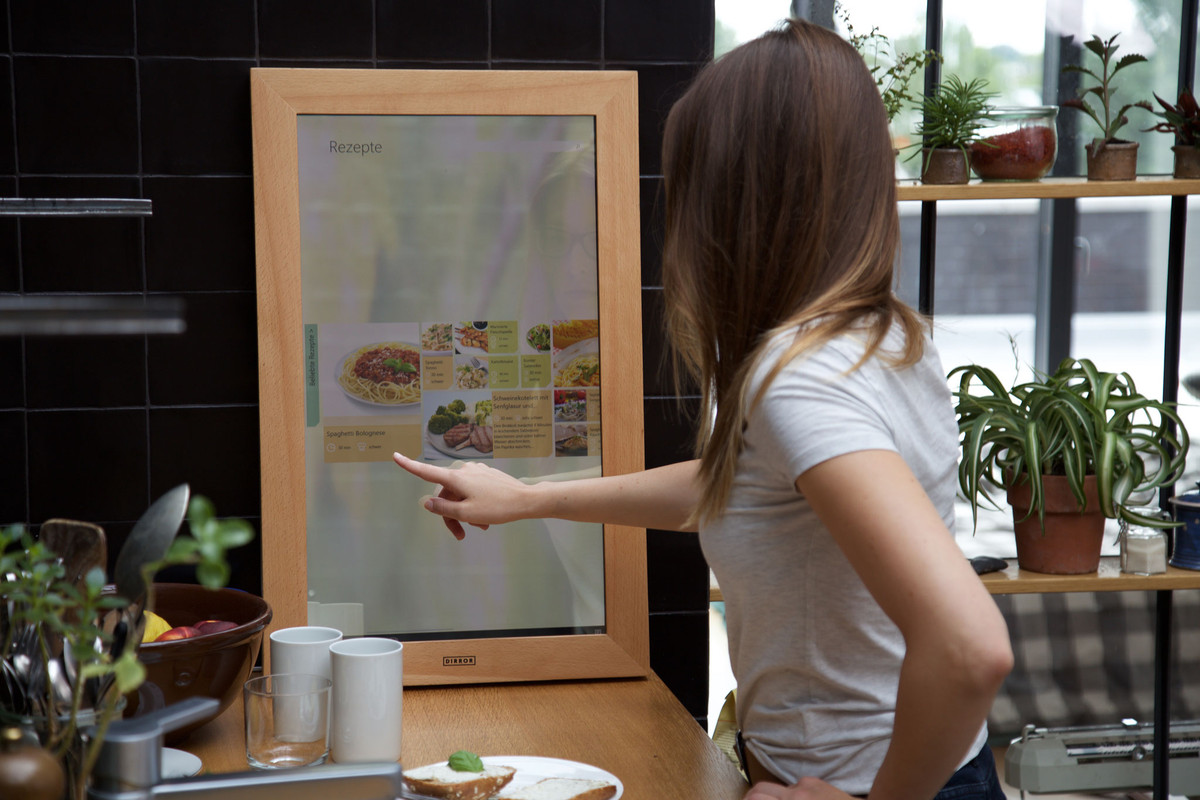Would you hang your Microsoft Surface Book on a wall and use it as a mirror?

A new trend is making its way to tech DIY’ers. Touch-screen mirrors are rising as the latest clever hack, towards making household fixtures, digitally connected and useful.
A touch-screen mirror, as the name suggests, is any specularly reflective panel that is thin enough to house, and allow to use a touchscreen device underneath, and transparent enough to see information shining through the reflective surface.
Hang it on a wall, and you’ll have an ultra-thin tablet computer, cleverly disguised as a regular old mirror, which can be used to ensure a properly executed Windsor knot, practice a speech, or check your email, and the weather.
For those willing to put in the time and effort, there are ways to put together a pretty nifty digital mirror with a reasonably small investment, but for those who can’t bother (and with deep pockets), a German company called “Dirror”, is making a name for itself by building the “world’s first digital mirror”.
While such statement may not be entirely true, we’ll choose not to nitpick, considering that this device is only sold in Germany, Switzerland and Austria,starting at €970 (a little over a thousand US dollars).
The specs include a 2.4GHz Intel Atom, 2GB of RAM and 32GB of SSD storage, which begs the question of what could possibly drive such a hefty price tag, for a device that isn’t expected to be actively used for more than 15-30 seconds at one time, during those brief moments when one would voluntarily stand in front of it.
What makes this “smart mirror” even less appealing, is the assumption that the target audience would intentionally use this mirror for tasks such as playing games, or shop, neither of which are activities that anyone would picture themselves performing while standing in the middle of a hallway, or in the bathroom while gargling mouthwash.
As a computing device, nothing could be more distracting and unsettling, than a PC with a perfectly reflective screen, staring back at the user, no matter the size of their ego.
As mentioned earlier, a little over a thousand will buy you a version of this device, with relatively modest specs, and with a 11 inch x 7.5 inch display size, including a rather thick wooden frame. If that sounds like “too much mirror” for you, wait to hear about the more “premium” offerings from Dirror.
The Dirror M comes in three colors: Java Brows Beech, White Silk, and Nordic Hazel Brown, with a 23 x 15 inch Full HD 1080p display, 128GB SSD, and 4GB of RAM, powered by a quad core Intel Cherry Trail CPU.
The Java Brown option of the M model retails for €1,870, with the two other variants, going for €1,970.
For those who truly are motivated to buy the one piece of electronic designed to actively induce buyer’s remorse, the model L retails between €2,070 and €2,470, and is powered by the exact same processor of the model M, has the same amount of RAM, and the same storage space, but with only two differences: the Nordic Hazel Brown variant features WQHD resolution (1440 x 2560), and the entire top-of-the-line model features a total size of 27 inches by 17 inches.
How does Dirror stack against any other regular touchscreen device? Poorly, even with the gigantic touchscreen, which isn’t necessarily useful, when it comes to regular applications, considering that its resolution is even lower than that of a 13 inch Microsoft Surface Book.
For around $2500, the rest of the specs aren’t very impressive either, especially since memory, CPU and storage are barely on a level with any number of very entry level Windows 10 tablets, which begs the question:
“Mirror, mirror on the wall, who’s the smartest shopper of all?”. (Cortana, you don’t need to answer that.).
Ready to shop?
PortableOne has the best deals on Microsoft Surface Book laptops, and more powerful devices for work and downtime.